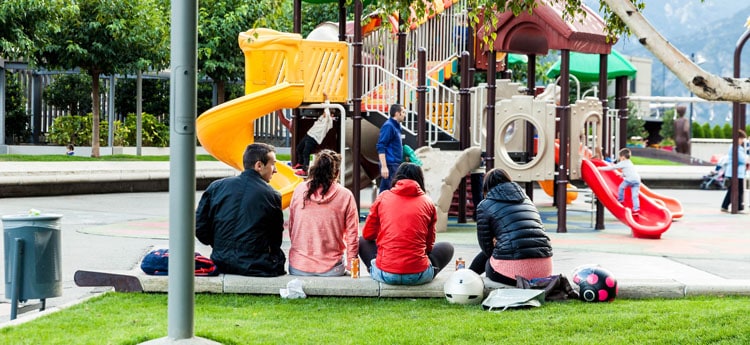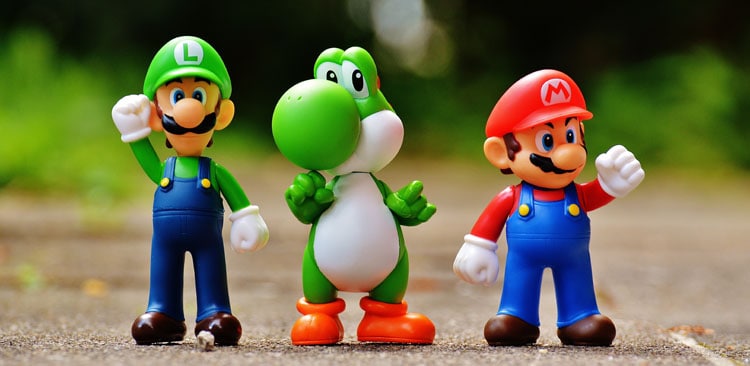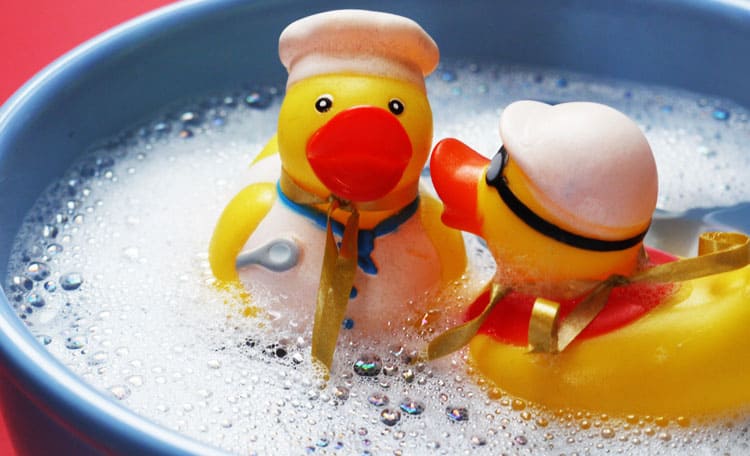Kids— they bring life, energy, adventure, and joy to your life; but one thing they shouldn’t bring is germs.
Protecting your kids’ toys can be a simple, effective way to keep germs at bay and keep kids safe from viral infections, bacteria, and contagious bugs.
When not properly cleaned, children’s toys can serve as a host for a wide variety of infectious diseases.
Kids and the Risks of Infected Toys
Kids tend to have weaker immune systems than healthy adults, which can make it especially easy for them to pass contagious germs amongst themselves. They cough and sneeze directly on toys, as well as put their hands in their mouth. These are all quick ways for germs to travel, making it critical to minimize the germ risk as much as you can.

Children can pass any number of infections back and forth to each other, but here are the top 10 disease offenders for children.
- Common Cold (Rhinovirus)
- Flu (Influenza)
- Strep Throat
- Gastrointestinal (Rotavirus)
- Pink Eye
- RSV (Respiratory Syncytial Virus Infection)
- Chicken Pox
- Head Lice
- Pinworms
- Ear Infections
Toys can be an especially good harboring ground for these types of infections and contagious diseases since they are often used multiple times a day, and by many children at a time. As mentioned above, children coughing, sneezing, or putting their hand to their mouth are all potential ways for germs to quickly spread from toys to children.
Here are a number of resources that outline some common infections that children are prone to, through the spread via infected toys, as well as how to recognize the signs of a dangerous play area.
- Common Infection Illnesses – What could be lurking on your toys? Check out this table for common childhood illnesses, how they’re spread, how to prevent the spread, and any recommended incubation period.
- How to Recognize Common Childhood Illnesses – This article includes an extensive list of common contagious infections in children and how to spot them.
- Kids and Germs – This is a quick overview of what germs are, when to use soap vs. hand sanitizer, and other tips to stay healthy.
- How Long Can Germs Hang Around? – This study finds that toys, books, and cribs can hold onto germs for much longer than expected, even without a human host.
- Are Your Child’s Toys Making Them Sick? – This article outlines the risk for germ spread on plastic toys
- Health Hints For Preventing Contagious Disease – In a childcare setting, children may be especially susceptible to catching bugs that are passed around the classroom. This article features ways to reduce the spread of contagious illness among children in daycare settings.
How to Prevent the Spread of Germs
As listed above, there are many diseases, viruses, and other infections that can be passed through children’s toys. Preventing the spread of germs around via children’s toys is a vital part of maintaining healthy immune systems in children.
There are many ways to prevent the spread of germs, especially when it comes to children’s toys:
Wash Hands
Washing your hands with soap and clear, running water is one of the best ways to kill germs that are already on your hand. Use warm water and wash for at least 20 seconds, according to the CDC.

Well-washed hands not only could keep you from spreading germs onto clean toys, but it also could protect you from germs already on the toys. Remember to wash your hands before and after using toys that other people have also used.
- Why Wash Your Hands? The CDC uses science to provide four compelling reasons to wash your hands.
- When and How to Wash Your Hands – Learn the proper way to wash your hands and how often you need to do it.
- Handwashing Songs – Try using handwashing songs to keep preschoolers involved and scrubbing up; this article has three fun song options.
Stay Home When Sick
If you think your children may have a virus or other contagious disease, try to keep them home and away from other kids if possible. This is important to decrease the chance of the virus spreading.
Symptoms like fever, vomiting, diarrhea, and a cough can all be extremely contagious, especially for children with these symptoms who share toys with others. When in doubt, it is usually best to keep your child home.
- Is Your Child Too Sick for School? – Follow these three questions if you’re wondering if your child should go to school or daycare.
- Four Signs That Your Child Is Too Sick For Daycare – These four symptoms are quick signs that your child is likely too sick for school or daycare.
Clean Toys
Cleaning toys is one of the best ways to prevent the spread of germs in a childcare or educational facility. Toys go from hand to hand, and sometimes mouth to mouth, making it vital that they are cleaned every single day.
But what does that mean exactly? How do you clean toys?

The process of cleaning toys involves three main steps.
- Clean – Wipe off dirt or debris with soap and water.
- Sanitize – Reduces the number of germs on any inanimate object to levels considered safe by public health codes or regulations.
- Disinfect – Destroys or inactivates most germs on any inanimate object, excluding bacterial spores.
Below are resources on how to, and the importance of, cleaning kids toys.
- Cleaning, Sanitizing and Disinfecting Toys – This article outlines the National Health and Safety Performance Standards guidelines for cleaning, sanitizing, and disinfecting toys.
- Cleaning, Sanitizing, Disinfecting – Learn the difference among these three cleaning processes and why each of them is so important.
- The Best Way to Clean Baby Toys – Fisher Price breaks down the best way to clean baby toys.
- How to Clean Kids’ Toys – Use Clorox bleach to clean kids’ toys and sanitize to kill germs.
- Guide to Cleaning and Disinfecting – Breaks down the difference between cleaning and disinfecting as well as when to use each disinfectant.
- Tips for Cleaning Toys in the Bedroom – Read through 10 helpful tips for cleaning toys, and other ways to prevent the spread of germs in your child’s bedroom or playroom.
- Washing Toys to Prevent Germs – Here is the 411 on how the proper way to clean children’s toys, according to WebMD.
How to Clean Toys
Knowing the proper way to clean and disinfect toys is the first step in preventing the spread of germs.
Different toys may call for different cleaning techniques, so it may be best to sort through the types of toys before starting to clean.
Water + Soap Solution
Warm water with a splash of soap is a quick and easy way to clean and disinfect toys. In the same way as how you can wash your hands to prevent the spread of germs, using soap and water to clean toys can stop germs in their tracks.

Use a bowl or clean sink to mix together the soap and water. You can wash the toys using a damp cloth and wiping it on or submerging the toy in the solution (if it’s 100% plastic with no electronic parts).
Water + Vinegar Solution
You can also try cleaning with one part white distilled vinegar and two parts water. You can mix the solution beforehand in a clear container or a spray bottle. Apply to the toys with a damp cloth, wiping down all surfaces of the toy. Disinfecting with vinegar is effective as vinegar is a natural disinfectant and is non-toxic.
Bleach Solution
Cleaning children’s toys with bleach solutions can be extremely effective at killing germs, but also potentially harmful, as bleach is toxic if ingested. If you do choose to clean with bleach, use a prediluted solution or make a solution at home using one-part bleach with 10-parts water.
Wipe down the toys with the solution using a cloth and then follow up using a damp cloth with just water to ensure that no bleach remains on the toys.
Always allow time for the toys to air dry after cleaning. As a precautionary tip, be careful when using bleach cleaners on colored toys, whether they be wood, plastic or otherwise. Cleaners with bleach or chlorine can take the paint off colored toys and ruin them.
Dishwasher
Some toys can even be washed directly in the dishwasher. Place small plastic toys on the top rack of the dishwasher. If the toys contain small parts, consider placing them in a small silverware basket before starting the cycle.
Never use a heated dry cycle for children’s toys as the heat can release toxins from certain plastics or ruin the toy.
Wipes
If you’re in a pinch and looking for a quick clean, you can also wipe down children’s toys quickly using wipes. Some baby wipes use all-natural ingredients and natural disinfectants while others take slightly harsher approaches for a more antibacterial type of clean.
For specialty cleaning, there are cleaning wipes that contain bleach for the ultimate disinfecting properties. Of course, these are not considered “baby wipes” as it is never safe to use bleach directly on a child’s skin.
Cleaning Kids’ Toys by Type
Plastic Toys
Many toys that are 100% plastic can be washed using any of the methods listed above. Make sure that the toys have no electronic parts before putting the toys in the dishwasher or submerging in any cleaning solution.
Wood Toys
To clean wood toys, you can also use any of the cleaning methods above. You could also use a commercial wood cleaner to wipe down the toys. As a note, never use wood polish on children’s toys since these toys often end up in their mouth.
Fabric Toys & Stuffed Animals
For fabric toys, you can easily throw these into the washing machine, on a gentle cycle. Use a detergent and warm water for best results.

You can either air dry or pop into the dryer on low heat for 15-20 minutes. For sensitive toys, try putting the items in a pillow case or mesh bag so they aren’t damaged in the tumble. Of course, make sure that the fabric toys have no electronic parts or sound boxes, as these are not safe to launder.
Board Books
Board books can be cleaned with soap and water, water and vinegar, or cleaning wipes, for best results. Be sure to wipe down all sides of the book and interior pages and let them dry completely.
How Often Should You Clean Kids’ Toys?
Depending on the type of toy, you may need to clean it more often or less often.
Toys that children put in their mouth should be cleaned after each use. Other toys that have less contact can be cleaned less often. When possible, replacing inexpensive toys (like play dough, slime, or other sensory play items) is the best practice to keep germs from harboring.
Just as you clean kid’s toys, it is equally as important to clean the play area where you child spends their time.Vacuuming the carpets, mopping the floors, and disinfecting furniture and other surfaces are important parts of keeping your area clean and germ-free.
For reference, here are some resources for cleaning schedules for kid-friendly environments:
- Child Care Cleaning & Disinfecting Schedule – This schedule breaks down how often to clean toys, play areas, sleep areas, feeding areas, and restroom / diaper changing areas.
- Classroom Cleaning Checklist – For daycare centers or schools, this printable checklist walks you through each part of a classroom and how to make sure that the area is clean.
- Whole Home Maintenance Checklist – A clean home can extend beyond the toys you put in it. Use this checklist to keep all areas of your house clean and well-maintained.
